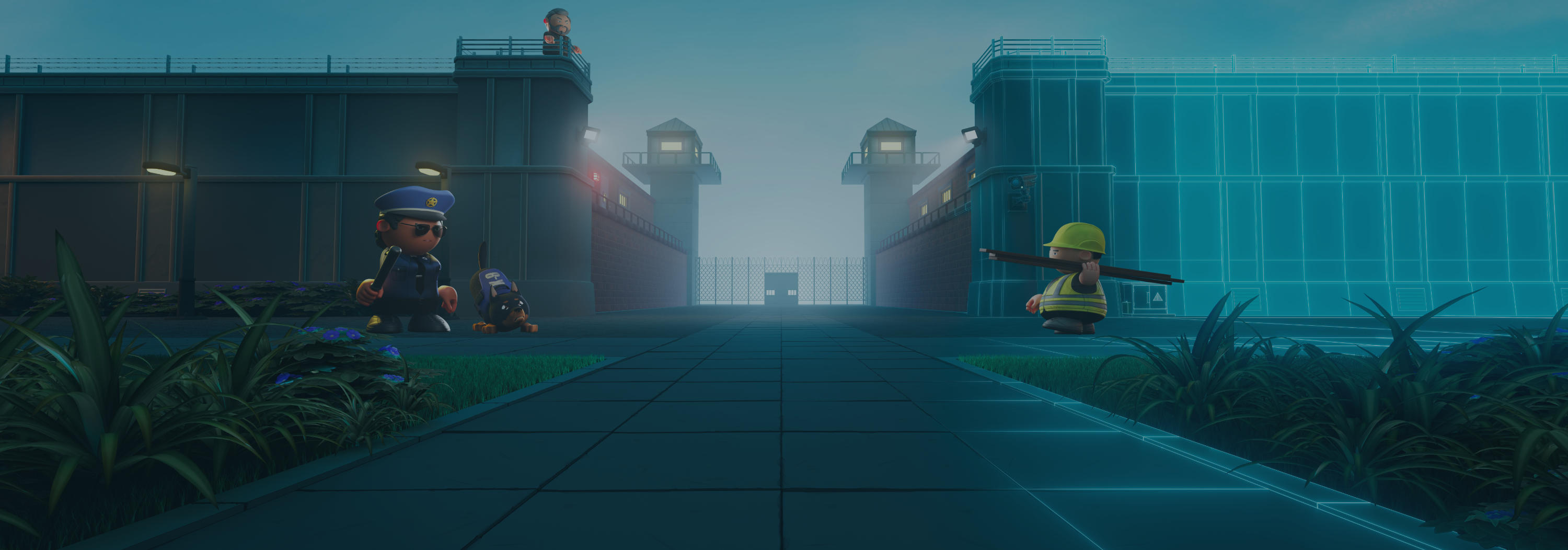News and Updates
News and Updates
Personalities & Relationships
Feature Highlight #6 Personalities & Relationships
Please note: The visuals and gameplay footage showcased in this video are from earlier development phases and may not accurately reflect the final game. Anticipate improvements in quality upon release. Welcome back, Architects. We’re here to chat about one of our favourite parts of the game: the inmates. It’s sometimes easy to forget that behind the misbehaviour and crimes, are human beings with a whole life both outside and inside your prison walls. Let’s begin!
Personalities and Connections
It’s all Bio-logy
All of the important information about your individual inmates can be found in their Bio. The Bio is really the core of who the prisoners are, why they’re locked up, and what they’ve done since they’ve been here. It includes tonnes of helpful information not just about their sentence, but also why they might do the things they do. The information is split into the following tabs: Bio (an overview of their sentence and personality Traits), Needs (how they are feeling right now), Connections (who they like, who they don’t), and Record (what they’ve done while locked up).
Dire Traits
Traits determine a lot about an inmate: they can affect their personality, physical and mental skills, social attitudes and much more. Traits can be Complementary or Conflicting, and play a major factor in how inmates perceive each other. For example; - An inmate with the Parental Figure trait may be more likely to enjoy the company of people who are Young; - People who are Pushovers are more likely to gravitate to those with a Silver Tongue; - Literally no one likes a Coward (not even other cowards). If you have two inmates who are constantly getting into scrapes with each other, there’s a good chance they have incompatible personalities.
Connect the Dots
Inmates can form Connections based on their interactions with each other. Connections are built, change over time, and can be lost or forgotten. Every time an inmate interacts with another, they get Connection points, a small positive or negative number based on how they felt about that interaction. They had a nice chat? +5 points! Someone punched them in the face? Big negative penalty! Positive interactions can come from a wide range of places such as chatting, sharing a canteen table, or engaging in social Recreation activities like Table Football or Chess. Negative interactions can come about from interactions such as sharing a cell with someone with conflicting traits or the outcome of fights.
In Prison Architect 2 players can use the Regime, rooms and objects to create social hangout areas and things for prisoners to do together, and thus help to promote prisoner connections. The addition of bunk beds and shared cells also means that players can group friends together, or use the Cell Transfer feature to separate others not getting along.
Positive interactions, which increase the overall Connection score, can push inmates from being Acquaintances to Friends, Close Friends, or Best Friends. Negative interactions, on the other hand, will likely lead to Rivalries, Enemies, and Arch Enemies. Generally, the more extreme the score, the more problematic the Connection will be for you the player.
It’s worth noting that Connections are not symmetrical, and even if one Inmate considers the other their Close Friend, the other could consider them a Rival.
The Friends We Made Along the Way
The Connections between your inmates can have a really big impact on your prison, and the issues you’ll need to respond to. It might be somewhat obvious that Enemies are more likely to attack each other on sight but, on the flip side, Close Friends are much more likely to help each other in Escape attempts, or even heal an injury if they have the skills. If a really popular inmate dies while in your prison, then all of their friends will spend the next couple of days grieving.
Connections have a really big impact on how prisoners make decisions, so it’s worth understanding where the problem areas are. By using the Popularity and Infamy Infoviews (accessed on the right-hand side of the screen), you can see a colour overlay of those with the strongest connections whether good or bad.
On the Record
The last tab on an inmate’s Bio is their Record. The first pieces of info it gives you are a snapshot of the inmate’s Parole details: essentially ‘How long have they served?’ and ‘How likely is a Parole Hearing to be successful?’. There are a lot of things that make up someone’s Parole Chance - outside of the length of sentence they’ve served. Officials will also consider how they’ve reformed, such as which qualifications they’ve acquired on the inside, the number of hours spent working, and the inmate’s recent behavior and punishments.
Thanks once again for joining us for this feature dive! In early development, we knew that one of the most important parts of the Prison Architect experience was the emergent stories that the inmates inadvertently generated, and we are really excited to see how those stories play out now the inmates are generating them on purpose! Will you build a nurturing prison full of best buds, or a harsh environment full of rivalry and squabbles? The Dev Team Prison Architect 2 ‾‾‾‾‾‾‾‾‾‾‾‾‾‾‾‾‾‾‾‾‾‾‾‾‾‾‾‾‾‾‾‾‾‾‾‾‾‾‾‾‾‾‾‾‾‾‾‾‾‾‾‾‾‾‾‾‾‾‾‾‾‾‾‾‾‾‾‾‾‾‾‾‾‾‾‾‾‾‾‾‾‾‾‾
Next up: Prison Architect Academy - Prison Tools Our next tutorial featuring TheGeekCupbord is coming up soon! Tune in to learn more about the tools you need to run a prison in Prison Architect 2. Make sure to tap the bell on YouTube to get notified.
Community
Stay Up To Date
Sign Up Now and get exclusive wallpapers
Sign up for News & Updates
By subscribing, you agree to receive news and special offers from Paradox Interactive.

